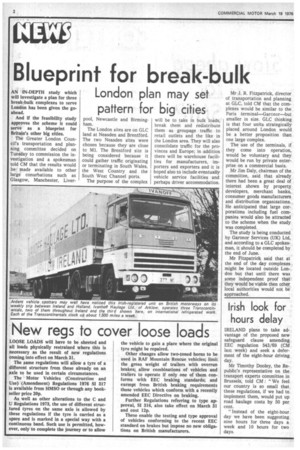Blueprint for break-bulk
Page 4

If you've noticed an error in this article please click here to report it so we can fix it.
London plan may set pattern for big cities
AN IN-DEPTH study which will investigate a plan for three break-bulk complexes to serve London has been given the goahead.
And if the feasibility study approves the scheme it could serve as a blueprint for Britain's other big cities.
The Greater London Council's transportation and planning committee decided on Tuesday to commission the investigation and a spokesman told CM that the results would be made available to other large conurbations such as Glasgow, Manchester, Liver pool, Newcastle and Birmingham.
The London sites are on GLC land at Neasden and BrentfOrd. The two Neasden sites were chosen because they are close to Ml. The Brentford site is being considered because it could gather traffic originating or terminating in South Wales, the West Country and the South West Channel ports, The purpose of the complex will be to take in bulk loads, break them and redistribute them as groupage traffic to retail outlets and the like in the London area. They will also consolidate traffic for the provinces and Europe; in addition there will be warehouse facilities for manufacturers, importers and exporters and it is hoped also to include eventually vehicle service facilities and perhaps driver accommodation. Mr J. R. Fitzpatrick, director of transportation and planning at GLC, told CM that the complexes would be similar to the Paris terminal—Garonor—but smaller in size. GLC thinking is that four units strategically placed around London would be a better proposition than one large complex.
The use of the terminals, if they come into operation, would be voluntary and they would be run by private enterprise on a commercial basis.
Mr Jim Daly, chairman of the committee, said that already there had been a great deal of interest shown by property developers, merchant banks, consumer goods manufacturers and distribution organisations. He anticipated that large corporations including fuel companies would also be attracted to the scheme when the study was completed.
The study is being conducted by Garonor Services (UK) Ltd, and according to a GLC spokesman, it should be completed by the end of June.
Mr Fitzpatrick said that at the end of the day complexes might be located outside London but that until there was some independent proof that they would be viable then other local authorities would not be approached.








































































































